Here we have one of the little understood members of the tribe Opuntia. Grusonia pulchella's range is from the eastern edge of the Sierras in California across central Nevada into the western counties of Utah. It is found growing in sandy dry habitats around the shore lines of playas, dry drainage channels, and sandy slopes. G. pulchella produces a large tuberous roots that store reserves of moisture.It grows in areas that receive about six inches of moisture per year.
You are indeed fortunate to come across this short clumping "Cylindropuntia / Grusonia / Opuntia" as it is not common, with widely dispersed populations. This little Opuntiad does not fit neatly into any of the current standard Opuntia categories. It has had a multitude designated names, assigned to it through the years. Here is a link that discusses it's relationship to other Opuntias. This article was first published in the Haseltonia, No.9, 2002 and is available through the web sight Opuntiads.com .
http://opuntiads.com/zpdf/grusonia-classification.pdf
I grow G. pulchella in a lean well drained substrate, irrigating it sparing in warm weather, once every two weeks. I find it takes temps down too zero Fahrenheit and can take a reasonable amount of winter moisture if grown in a well drained sandy soil. Too wet of a sight in hot weather causes it to rot more readily than in cool damp weather conditions. I start it from stem cuttings, but they may take up to six months to root.
G. pulchella produces two to three inch, hot pink, double blossoms with a golden boss of stamens. They have a lovely, satin sheen and crepe paper texture.
Comments
Re: Grusonia pulchella (syn. Opuntia Pulchella)
G. pulchella is hardy to at least -15F. My plant developed an elongated trunk which fell over after it realized it was doomed to spend most of the winter under snow. I though the tip of the trunk would root, but it rotted instead. New growth is coming from the caudex, though.
I grew some from seed; didn't realize they shot up they way they did; thought they were something else, and tossed them. (I do a lot of stupid things like that.)
I think the name was changed from Opuntia in the 1970s; the idea that a cactus taxon has had the same name for almost forty years is almost too much.
Re: Grusonia pulchella (syn. Opuntia Pulchella)
I have heard from several local cactus gardeners, that it will also shed it's upper branches in extreme drought conditions. Then resprout when conditions improve.
Re: Grusonia pulchella (syn. Opuntia Pulchella)
I have been growing this plants from seed to flowering size and reproduced seeds from my own plants and it have been in my collection for 10 years.
Living in a climate with cool summers and wet/cold winter I keep it in the unheated greenhouse. Growing in claypots in a mixture of sand and gravel. It is an easy plants as long as it gets hot summers and not too much water and very dry winters. And its very easy from seeds unlike to many other opuntioids. Just sow them, keep warm and not too much water and lots of air movement.
Martin Tversted
Denmark z6
Re: Grusonia pulchella (syn. Opuntia Pulchella)
Marten
Nice to hear from you. I believe we have talked on different forums in the past.

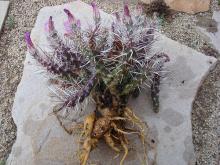
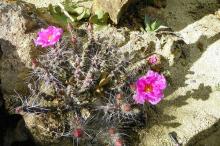
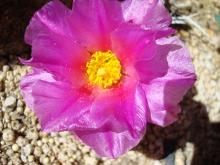
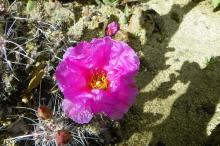
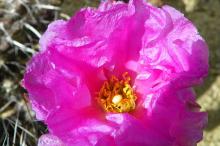
What a spectacular specimen: I recall seeing them in bloom many years ago about this time of year crossing Nevada on highway 50: this has to be one of the supreme gems of the Opuntia clan....